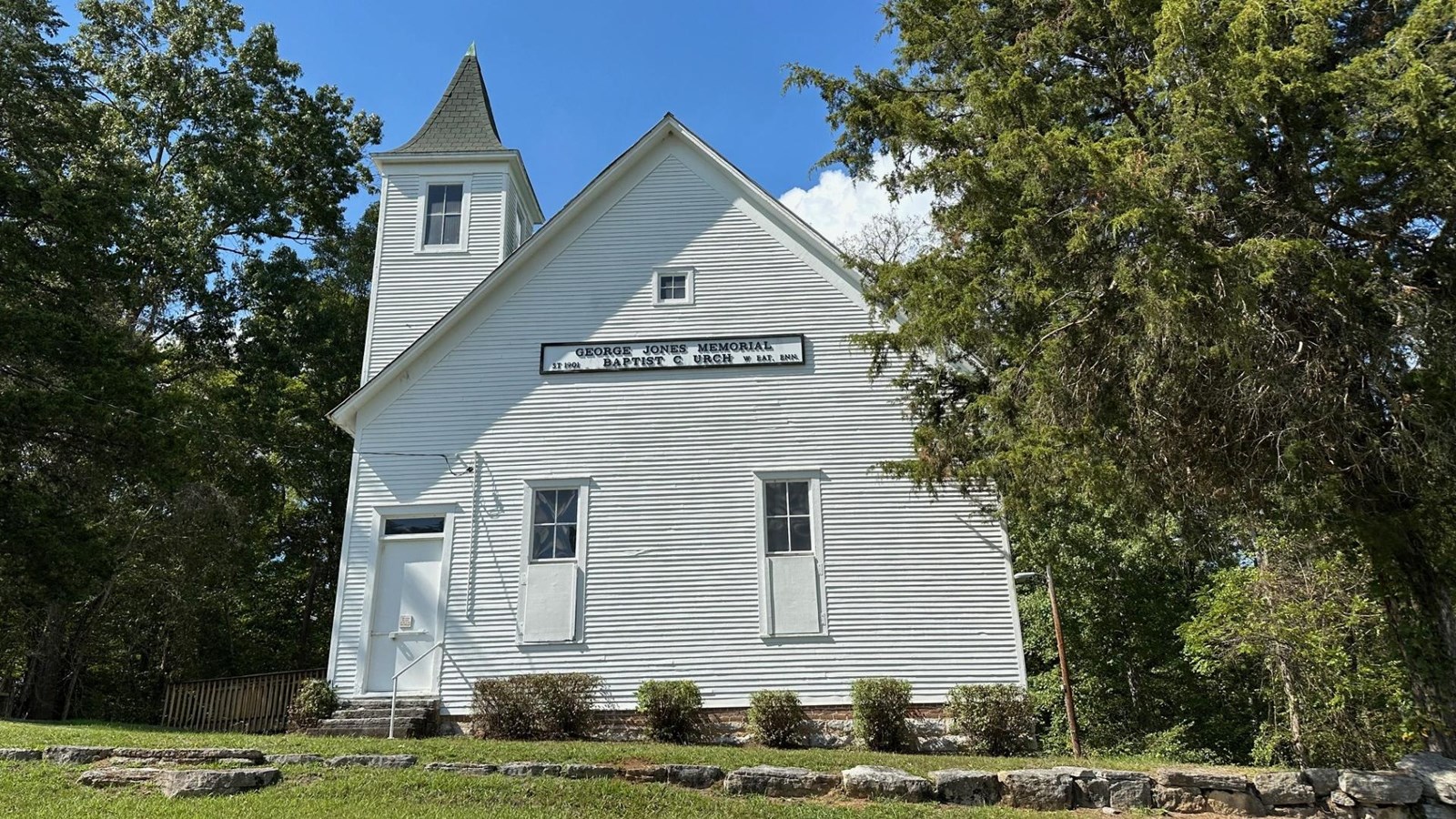Last updated: October 3, 2024
Place
Wheat Church

NPS
Wheat Tennessee “was a great community. It was a model community” in the memory of Bonita Irwin, who was raised there. She fondly recalled a place where “Our neighbors was real good. We loved everyone. I mean, if one was in trouble, they had help. Everybody went in to help them.” In her memories, Wheat was a thriving place, renowned for its peach orchards and home to educational activities and numerous social activities and clubs. In addition to holding religious services, the George Jones Memorial Baptist Church was the primary gathering center for Wheat residents, where clubs met, potlucks were held, and this tight-knit community lived until it was forcibly displaced by the Manhattan Project.
The Wheat Church, or George Jones Memorial Baptist Church, was a centerpiece of the Wheat community, which ultimately became the K-25 site. Officially named in 1881 by local postmaster Henry Franklin Wheat, the Wheat community boasted a post office, several schools, Masonic lodge, service station, three churches, a small college, and a number of residences and farms. The George Jones Memorial Baptist Church, constructed in 1901 and named for a local reverend who donated 250 acres of his land to the church, is the last surviving structure of the Wheat community.
In 1942, the federal government selected 59,000 acres of land in East Tennessee to develop what would become Oak Ridge. Manhattan Project administrators offered residents of Wheat and nearby communities between $35-45 dollars per acre to give up the land with no relocation expenses provided; many were told to vacate within two weeks. Some Wheat residents accepted this sacrifice; Don Watson’s mother said at the time: "If it'll get the boys home, they can take the home. I will not complain." Eulah Cooper confirmed this sentiment, saying that “it was just something I feel like people, more or less, felt like they had to do.” For other residents however, it was very hard. Some resented it very much. And frankly, “there were some problems” such as the inability to retain family heirlooms and gather crops in the ground prior to forcible removal . Some residents of the Wheat community had been previously displaced by the federal government.. Just a few years prior, Tennessee Valley Authority construction and the establishment of Great Smoky Mountains National Park forced their relocation. Wheat’s removal was “more traumatic I think for those people than it was for some of the rest of us,” according to Eulah Cooper.
Continue Your Journey
The George Jones Memorial Baptist Church is located a short distance from the K-25 site. A brief walk from a small, gravel parking lot leads to the church. Ranger programs often take place at the church. In addition, the Children's Museum of Oak Ridge houses several exhibits on what life was like in the region before the Manhattan Project. Also, the New Bethel Baptist Church, another pre-Manhattan Project structure now located on the grounds of Oak Ridge National Laboratory (ORNL), is available for guided tours.
